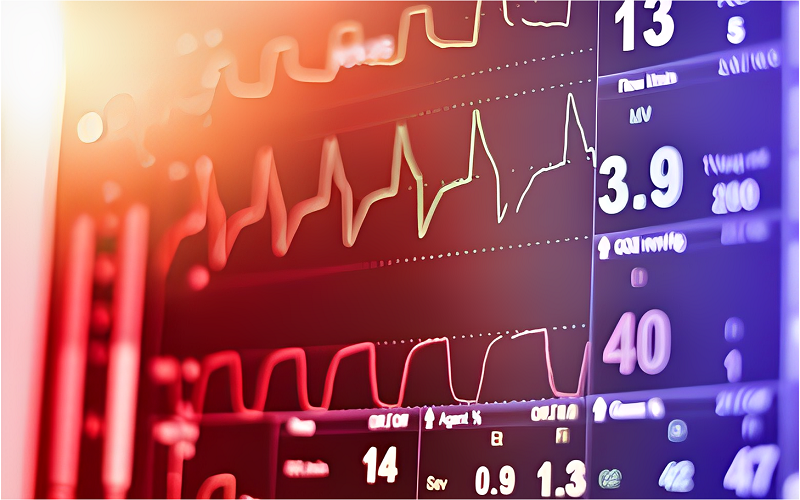Understanding the nuances of heart rates is crucial for maintaining optimal cardiovascular health. In this comprehensive guide, we will explore the differences between normal and dangerous heart rates, shedding light on the normal pulse rate, resting heart rates, bradycardia, tachycardia, and their implications on cardiac health.
It is essential to maintain good cardiac health to ensure a healthy state of living. Visit a top hospital in Gurgaon to address any cardiac issues that you may be facing today.
Normal Pulse Rate:
The normal pulse rate, also known as the heart rate, is a key indicator of cardiovascular health. It is the number of heartbeats per minute (bpm) and varies with age, fitness level, and overall health. For adults, the normal resting heart rate typically ranges between 60 to 100 bpm. Athletes may have a lower heart resting rate due to their well-conditioned cardiovascular systems.
Resting Heart Rate:
Resting heart rates refer to the heart rate when the body is at rest. It is usually measured first thing in the morning before any physical activity. A normal resting heart rate indicates the efficiency of the heart in pumping blood to meet the body’s needs. Regular monitoring of your resting heart rate can offer insights into your cardiovascular fitness and potential health issues.
Normal Resting Heart Rate:
A normal resting heart rate is an essential parameter for assessing cardiac health. The American Heart Association suggests that an ideal resting heart rate for adults is between 60 to 100 bpm. Lower resting heart rates are often associated with better cardiovascular fitness and a more efficient heart. However, it’s crucial to note that individual variations exist, and factors such as age, medications, and stress can influence the heart resting rate.
Cardiac Disease and Resting Heart Rate:
An abnormal resting heart rate could be an early indicator of cardiac disease. Research indicates that an elevated resting heart rate may be associated with an increased risk of cardiovascular events. A study published in the Journal of the American College of Cardiology found that individuals with a heart resting rate above 80 bpm had a higher risk of cardiovascular disease.
Bradycardia:
Bradycardia is a condition that features a heart rate that is slower than the normal range. While a normal resting heart rate is generally between 60 and 100 bpm, bradycardia involves a heart rate below 60 bpm. Athletes may naturally experience bradycardia due to their well-conditioned hearts. However, in non-athletic individuals, bradycardia may be a cause for concern, especially if accompanied by symptoms such as dizziness, fainting, or fatigue.
Causes of Bradycardia:
Several factors can contribute to bradycardia, including ageing, heart damage from heart attacks or diseases, certain medications, and congenital heart defects. It’s essential to consult with a healthcare professional if you notice persistent bradycardia symptoms, as they may indicate an underlying issue that requires medical attention.
Tachycardia:
On the other end of the spectrum is tachycardia, a condition characterized by a heart rate that exceeds the normal range. Tachycardia typically involves a heart resting rate above 100 bpm and can be associated with various health issues.
Causes of Tachycardia:
Tachycardia can be caused by factors such as stress, fever, anaemia, heart-related conditions like atrial fibrillation, or other medical conditions. Chronic tachycardia may lead to complications, including an increased risk of stroke, heart failure, or sudden cardiac arrest.
Balancing Act: Finding the Ideal Heart Rate
Maintaining a balance in heart rate is crucial for overall health. Regular exercise, a heart-healthy diet, and stress management can contribute to a well-regulated heart rate. Engaging in aerobic activities, such as brisk walking or cycling, can enhance cardiovascular fitness and lower resting heart rates.
Monitoring Your Heart Rate:
Given the significance of heart rate in assessing cardiac health, it’s advisable to monitor it regularly. The use of fitness trackers and smartwatches with heart rate monitoring capabilities has become increasingly popular. These devices provide real-time insights into your heart rate, helping you stay proactive about your cardiovascular health.
Seeking Medical Attention:
If you notice persistent abnormalities in your resting heart rate, experience symptoms of bradycardia or tachycardia, or have a history of cardiac disease, it is crucial to consult with a healthcare professional. A thorough evaluation, including diagnostic tests like electrocardiograms (ECG or EKG), may be necessary to identify underlying issues and formulate an appropriate treatment plan.
Conclusion:
In conclusion, understanding the nuances of normal and dangerous heart rates is pivotal for maintaining optimal cardiovascular health. Regular monitoring of the resting heart rate, recognizing the signs of bradycardia and tachycardia, and adopting a heart-healthy lifestyle are essential steps towards preventing any cardiac disease. Remember, your heart rate is not just a number – it’s a window into your overall well-being. Prioritize your cardiovascular health, and seek medical advice when needed to ensure a heart that beats strong and steady for years to come.
Visit a super-speciality hospital in Gurgaon today to facilitate good cardiac health in this day and age.



